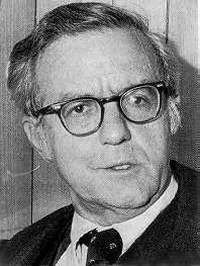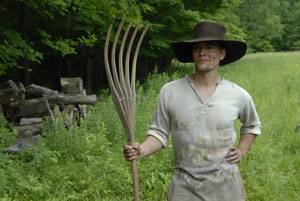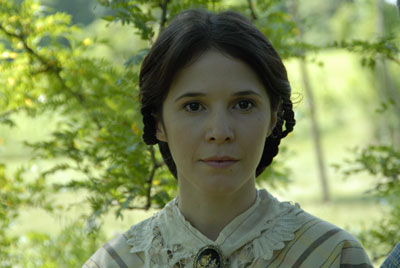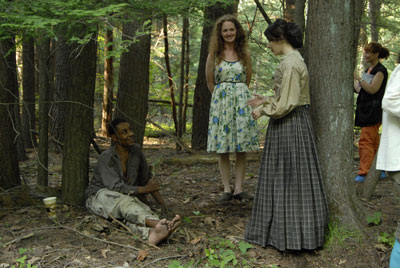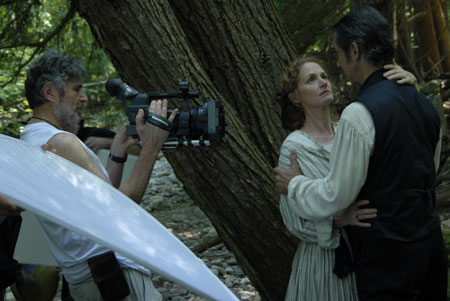THE OLD NORTH
In 1790, the first U.S. census counted 13,059 free blacks in New England, with another 13,975 in New York, New Jersey, and Pennsylvania. Strictly speaking, none of them was "free," for their lives were proscribed politically, economically, and socially. While white indentured servants often became respected members of their communities after their indentures ended, free blacks in the North rarely had the opportunity to rise above the level of common laborers and washerwomen, and as early as 1760 they had formed ghettoes in the grimy alleys and waterfront districts of Boston and other Northern towns.
In colonial times, Northern freemen, like slaves, were required to carry passes when traveling in some places, and they were forbidden to own property in others. Although taxed in New England, they could not vote there in early colonial times, though they could in the plantation colonies.[2] Free blacks were required to work on roads a certain number of days a year in Massachusetts, at the discretion of the local selectmen. They could only use ferries under certain conditions in New England. In South Kingstown, Rhode Island, they could not own horses or sheep. In Boston, they could not carry a cane unless they were unable to walk without one.
Pennsylvania colony's “Act for the better Regulation of Negroes” set penalties for free blacks who harbored runaway slaves or received property stolen from masters that were potentially much higher than those applied to whites. If the considerable fines could not be paid, the justices had the power to order a free black person put into servitude. Under other provisions of the act, free negroes who married whites were to be sold into slavery for life; for mere fornication or adultery involving blacks and whites, the penalty for the black person was to be sold as a servant for seven years. Whites in such cases faced different or lighter punishment. By a law of 1718, a black man convicted of the rape of a white woman was to be castrated. Throughout Pennsylvania colony, the children of free blacks, without exception, were bound out by the local justices of the peace until age 24 (if male) or 21 (if female). All in all, the "free" blacks of colonial Pennsylvania led severely circumscribed lives; they had no control even over their own family arrangements, and they could be put back into servitude for "laziness" or petty crimes, at the mercy of the local authorities.
Having set controls on their black residents, the Northern states busied themselves in passing laws to make sure no more blacks moved within their boundaries. These were not elitist actions. The pressure for total exclusion came from the working class whites, struggling for a little bargaining power with the shopowners and fearful of inexpensive black competition that could drive down wages. New Jersey in 1786 had prohibited blacks from entering the state to settle, because "sound public policy requires that importation be prohibited in order that white labour may be protected." Connecticut's legislature, making the same prohibition in 1784, had declared that it did so because "the increase of slaves is injurious to the poor."
As far back as 1717, citizens of New London, Connecticut, in a town meeting voted their objection to free blacks living in the town or owning land anywhere in the colony. That year, the colonial assembly passed a law in accordance with this sentiment, prohibiting free blacks or mulattoes from residing in any town in the colony. It also forbid them to buy land or go into business without the consent of the town. The provisions were retroactive, so that if any black person had managed to buy land, the deed was rendered void, and a black resident of a town, however long he had been there, was now subject to prosecution at the discretion of the selectmen. Massachusetts in 1788 prescribed flogging for non-resident blacks who stayed more than two months. Less than four months after its Congressmen voted against the restrictions on black settlement in the Missouri Compromise, Massachusetts set up a legislative committee to investigate such legislation for its own sake. From 1813 to 1852, Pennsylvania was constantly debating exclusion, under pressure of petitions from the counties along the Mason-Dixon Line.
Like the black codes of the South and Midwest in the 19th century, enforcement of Northern colonial race laws was selective, and their real value lay in harassment and discouragement of further settlement, and in being a constant reminder to free blacks that their existence was precarious and dependent on white toleration. Across the North, such laws were the sword hung above the heads of a whole black population: Step out of line, make one false move, and you could be shipped out, or sold into slavery. You wouldn't have the right to face your (white) accuser in court (as you would in, say, ante-bellum Louisiana). Anti-sodomy laws still are on the books in some states; their defenders point out that they are rarely invoked, but that does not make their potential targets feel safer living under them. It gets to the gist of what makes slavery itself, however comfortable, always worse than freedom, however miserable. Many Southern slaves, perhaps the mass of them, lived better than most northern industrial laborers, when you quantify their work requirements, nutrition, and life expectancy. But the slave could be, at any moment, and with no recourse, stripped, beaten, whipped, violated, and sold. That “could be” embraces all the evil of slavery.
So the Negro [in the North] is free, but he cannot share the rights, pleasures, labors, griefs, or even the tomb of him whose equal he has been declared; there is nowhere where he can meet him, neither in life nor in death.In the South, where slavery still exists, less trouble is taken to keep the Negro apart: they sometimes share the labors and the pleasures of the white men; people are prepared to mix with them to some extent; legislation is more harsh against them, but customs are more tolerant and gentle.[3]
The NORTHWESTThe new states that entered the union in the North after the end of slavery were just as concerned with their racial purity as the old ones. To do so, they turned to an old practice in the North: the exclusion law. Slaves could not be brought into the Northwest Territories, under the ordinance of 1787, but slaves already there were to continue in bondage. Once states began to emerge from the old territories, most of them explicitly barred blacks or permitted them only if they could prove their freedom and post bond. Ohio offered the first example, and those that followed her into the union followed her lead on race.
Slavery was abolished in Ohio by the state's original constitution (1802). But at the same time, Ohio, with slave-state Kentucky across the river, aggressively barred black immigration. When Virginian John Randolph's 518 slaves were emancipated and a plan was hatched to settle them in southern Ohio, the population rose up in indignation. An Ohio congressman warned that if the attempt were made, “the banks of the Ohio ... would be lined with men with muskets on their shoulders to keep off the emancipated slaves.”[4] Even the abolitionists in this region pitched their appeal, in part, to the desire for a homogenous (white) states. They claimed that attempts by blacks to immigrate into the state would end when slavery ended and blacks had no more cause to flee the South for “the uncongenial North.”
According to historian Leon F. Litwack, Ohio “provided a classic example of how anti-immigration legislation could be invoked to harass Negro residents.”[5] The state had enacted Black Laws in 1804 and 1807 that compelled blacks entering the state to post bond of $500 guaranteeing good behavior and to produce a court paper as proof that they were free. “No extensive effort was made to enforce the bond requirement until 1829, when the rapid increase of the Negro population alarmed Cincinnati. The city authorities announced that the Black Laws would be enforced and ordered Negroes to comply or leave within thirty days.” Citizens of the city's “Little Africa” -- largely a ghetto of wooden shacks owned by whites -- appealed for a delay, and sent a delegation to Canada to try to find a place to settle there. But if the authorities were willing to offer more time, the Ohio mob was not, and whites in packs began to roam through the black neighborhoods, burning and beating. The delegation came back from Upper Canada with the offer of a safe home from the governor. “Tell the Republicans on your side of the line that we royalists do not know men by their color. Should you come to us you will be entitled to all the privileges of the rest of His Majesty's subjects.” About half of the city's 2,200 blacks left, most of them apparently going to Canada. The proponents of strict enforcement of the Black Laws then discovered that they had driven off “the sober, honest, industrious, and useful portion of the colored population,” and their absence had lifted “much of the moral restraint ... on the idle and indolent, as well as the profligate” among the rest.[6]
Blacks petitioned against the exclusion laws, but the state legislature denied they had the right to petition the government "for any purpose whatsoever." Finally, after the Free Soil Party gained a degree of power in the state in 1849, a compromise partially repealed the Black Laws, ending the bond-posting requirement. It was a rare, if not unique, instance of a Northern state loosening its restrictions on black settlement.
The northern tier of the state had been settled by good stock from southern New England and to a degree shared in the liberal and abolitionist religion and politics of that region. But when it came to an issue like integrating schools, the people's plain feelings revealed themselves. When the public school system spread to Ohio, citizens and legislators alike objected to educating blacks from public funds, in part because it would tend to encourage other blacks to come there and settle. In the end, the state, like Pennsylvania, required its district school directors to set up separate facilities for black and white children. The Ohio courts upheld this segregation in 1850 and 1859, rejecting the idea of integration and declaring that, “whether consistent with true philanthropy or not ... there ... still is an almost invincible repugnance to such communion and fellowship.”
Yet segregation was not enough for many Ohio whites, and they insulted, opposed, and sometimes literally attacked private schools set up to teach black children. Whites destroyed newly opened schools for blacks in Zanesville in 1837 and Troy in 1840. Similar mass resistance took place in Vermont and Connecticut.
In the 1830s, Oberlin College decided to open its doors to black students. As soon as the plan became known "panic and despair" seized students, faculty, and town residents. The chief proponent of the plan hastened to assure them that he had no intention to let the place get “full up with filthy stupid negroes,” but the controversy continued. The board of trustees tried to table the plan, but by now the abolitionists were aroused and would accept no retreat. In the end, in 1835, the trustees punted the decision to the faculty, which was known to favor black admissions. The change threatened the very existence of the college. From New England, the quarter from which much of the school's student body and money came, the college's financial agent wrote predicting disaster. “For as soon as your darkies begin to come in in any considerable numbers, unless they are completely separated ... the whites will begin to leave -- and at length your Institute will change colour. Why not have a black Institution, Dyed in the wool -- and let Oberlin be?”[7] The college survived integration, mostly because before 1860 only a token handful of blacks was admitted. In 1860, the figure for black students was 4 percent. Still, the school was shockingly integrated by Northern standards. A Massachusetts girl wrote home from the school in 1852, assuring her family, “that we don't have to kiss the Niggars nor speak to them,” and only about six “pure Niggars” were at the school, the rest looked like mulattoes, and anyway they dressed better than most of the white students.
Both Indiana (1816) and Illinois (1818) abolished slavery by their constitutions. And both followed the Ohio policy of trying to prevent black immigration by passing laws requiring blacks who moved into the state to produce legal documents verifying that they were free and posting bond to guarantee their good behavior. The bond requirements ranged as high as $1,000, which was prohibitive for a black American in those days. Anti-immigration legislation passed in Illinois in 1819, 1829, and 1853. In Indiana, such laws were enacted in 1831 and 1852. Michigan Territory passed such a law in 1827; Iowa Territory passed one in 1839 and Iowa enacted another in 1851 after it became a state. Oregon Territory passed such a law in 1849.[8] Blacks who violated the law faced punishments that included advertisement and sale at public auction (Illinois, 1853).
The evidence seems to support the theory that these rules were not uniformly enforced. But they were invoked against "troublesome" black residents, or they could be used against whole communities, as in Cincinnati, when white citizens found the increase in black population had reached an unacceptable level. They served blacks as grinding reminders of apartheid intentions and legal subjugation, and they offered white authorities and Northern mobs a cloak for harassment and violence.
Exclusion ordinances often were advanced by self-professed friends of the freemen who foresaw only tragedy in attempts of the races to share the land. Robert Dale Owen, speaking in Indiana in 1850, asked if any decent person desired “the continuance among us of a race to whom we are not willing to accord the most common protection against outrage and death.” The writers in such cases seem honestly troubled by the plight of free blacks. The rhetoric hardly is an exaggeration: during the constitutional debate in the state that year, one speaker had frankly acknowledged, “It would be better to kill them off at once, if there is no other way to get rid of them. ... We know how the Puritans did with the Indians, who were infinitely more magnanimous and less impudent than the colored race.”
Not content with mere legislation, Illinois, Indiana, and Oregon had anti-immigration provisions built into their constitutions. In Illinois (1848), in clause-by-clause voting, this clause was approved by voters by more than 2 to 1. Most of the opposition to it came from the northern counties of the state, where blacks were few. In Indiana (1851), it was approved by a larger margin than the constitution itself. In Oregon (1857), the vote for it was 8 to 1. The Illinois act stayed on the books until 1865. The Black Codes dealt with more than just settlement. Oregon forbid blacks to hold real estate, make contracts, or bring lawsuits. Illinois, Ohio, Indiana, Iowa, and California prohibited them from testifying in cases where a white man was a party.
Indiana's anti-immigration rule was challenged in the case of a black man convicted for bringing a black woman into the state to marry her. The state Supreme Court upheld the conviction, noting that, “The policy of the state is ... clearly evolved. It is to exclude any further ingress of negroes, and to remove those already among us as speedily as possible.” There was no legal segregation in Indiana's public schools: none was necessary. The white citizens of the state would keep the schools racially pure more thoroughly than any legal provision could. A court upheld the white-only Indiana public schools in 1850, finding that, in the eyes of the state, “black children were deemed unfit associates of whites, as school companions.”
Wisconsin was one of the first states to establish black suffrage, but this was accomplished only through a Supreme Court decision after suffrage had been defeated repeatedly at the polls. Like many in the North, Wisconsin residents disliked slavery, but they also felt no desire to integrate with blacks, whom they felt were inferior. A committee of the 1846 statehood convention proposed an article granting suffrage to “white citizens of the United States,” foreign residents who intended to become citizens and certain Indians. A few idealists urged that the word “white” be deleted, but they were opposed by the majority. The convention ultimately agreed to submit to the voters a separate article allowing black suffrage. The 1846 constitution was voted down for reasons unrelated to suffrage; but the suffrage article also was defeated decisively, with only 34 percent in favor.
The 1847-48 constitutional convention resolved the suffrage issue by agreeing that the Legislature could allow black suffrage at any time, provided that the law was "submitted to the vote of the people at a general election, and approved by a majority of all the votes cast at such election." The compromise appealed to the delegates because a vote for it could be defended as a vote for popular sovereignty rather than for black equality or abolitionism. The first state Legislature promptly passed a black suffrage law and authorized a referendum, which took place in 1849. The law was approved by a vote of 5,265 to 4,075. However, fewer than half of all voters casting ballots at the election voted on the suffrage issue; therefore, the law had failed. The Legislature passed new suffrage laws in 1857 and again in 1865. The voters rejected both laws, although the pro-suffrage vote increased from 41 percent in 1857 to 46 percent in 1865.[9]
When the Civil War ended, 19 of 24 Northern states did not allow blacks to vote. Nowhere did they serve on juries before 1860. They could not give testimony in 10 states, and were prevented from assembling in two. Several western states had prohibited free blacks from entering the state. Blacks who entered Illinois and stayed more than 10 days were guilty of "high misdemeanor." Even those that didn't exclude blacks debated doing so and had discriminatory ordinances on the local level.
1. Lorenzo Johnston Greene, “The Negro in Colonial New England, 1620-1776,” N.Y.: Columbia University Press, 1942, p.302.
2. free blacks voted in Virginia until 1723, in North Carolina until 1715, in South Carolina until 1701, and in Georgia until 1754. See Albert E. McKinley, “Suffrage Franchise in the Thirteen English Colonies in America,” Philadelphia: University of Pennsylvania Press, 1905.
3. Alexis De Tocqueville, “Democracy in America,” transl. George Lawrence, Harper & Row, 1966, p.343.
4. “Congressional Globe,” 30 Cong. 1 Sess., appendix, p.727.
5. Leon F. Litwack, “North of Slavery,” Chicago, 1961, p.72.
6. “Cincinnati Gazette,” Aug. 17, 1829.
7. Robert S. Fletcher, “History of Oberlin College,” 1943, vol. II, p.523.
8. Henry W. Farnam, “Chapters in the History of Social Legislation in the United States to 1860,” Washington: Carnegie Institution, 1938, pp.219-20.
9. John G. Gregory, “Negro Suffrage in Wisconsin,” Transactions of the Wisconsin Academy of Sciences, Art and Letters, XI (1898), pp. 94-101.

